- Events & Programs Home
- Calendar
- Accessibility
- Adults
-
Families & Teens
- Families & Teens Home
- 10x10 Teen Art Expo
- Art on the Rise
- Art Together: Art Making for Families with Children Ages 3–5
- Babies Sing with May Festival Minis
- Boy Scouts / Girl Scouts
- CAM Kids Day
- Family Storytime and Gallery Walk
- Family Studio: Art Making for Families with Children Ages 6–12
- Games in the Galleries
- Members-Only Baby Tours
- Public Baby Tours
- REC Reads
- Rosenthal Education Center (REC)
- Saturday Morning Art Class
- See Play Learn Kits
- Summer Camp
- Teachers
- Community Outreach
- Fundraisers
- Plan Your Own Event

- Events & Programs Home
- Calendar
- Accessibility
- Adults
-
Families & Teens
- Families & Teens Home
- 10x10 Teen Art Expo
- Art on the Rise
- Art Together: Art Making for Families with Children Ages 3–5
- Babies Sing with May Festival Minis
- Boy Scouts / Girl Scouts
- CAM Kids Day
- Family Storytime and Gallery Walk
- Family Studio: Art Making for Families with Children Ages 6–12
- Games in the Galleries
- Members-Only Baby Tours
- Public Baby Tours
- REC Reads
- Rosenthal Education Center (REC)
- Saturday Morning Art Class
- See Play Learn Kits
- Summer Camp
- Teachers
- Community Outreach
- Fundraisers
- Plan Your Own Event
Blog: CAM Uncovered
Blog: CAM Uncovered
- Home
- Plan Your Visit
- Art
-
Events & Programs
- Events & Programs Home
- Calendar
- Accessibility
- Adults
-
Families & Teens
- Families & Teens Home
- 10x10 Teen Art Expo
- Art on the Rise
- Art Together: Art Making for Families with Children Ages 3–5
- Babies Sing with May Festival Minis
- Boy Scouts / Girl Scouts
- CAM Kids Day
- Family Storytime and Gallery Walk
- Family Studio: Art Making for Families with Children Ages 6–12
- Games in the Galleries
- Members-Only Baby Tours
- Public Baby Tours
- REC Reads
- Rosenthal Education Center (REC)
- Saturday Morning Art Class
- See Play Learn Kits
- Summer Camp
- Teachers
- Community Outreach
- Fundraisers
- Plan Your Own Event
- Give & Join
- About
- Tickets
- Calendar
- Exhibitions
- Collections
- Blog
- Shop
Telling a Hero Story Without Words
by Bruce Petrie, President, Board of Trustees
6/12/2025
Everyone likes a good hero story, a protagonist struggling against the odds, yearning for home or homeland. There’s the classic story of the Odyssey—featuring the Greek hero Odysseus—but popular culture now has countless versions, whether kids’ superheroes or the latest Tom Cruise movie.
Now what if you wanted to tell a hero story without words? What if your storytelling medium is silence? What if it’s pictorial, using only imagery, color, shape and form within the four-corner limits of a canvas? How would you do this?
Luckily, the painter-storyteller leaves clues in the work itself. We just need to learn where to look. It’s mind-reading the painter based on the evidence in the composition, looking below the surface into the design.
So, let’s look at the masterpiece ’Haying Scene’ (1884) by French naturalist painter Julien Dupré (1851–1910) which you can see in person at the Cincinnati Art Museum’s exhibition Farm to Table.
Here are three images: the first is Dupré’s painting, the second is my quick compositional sketch of the main features, and the third is an abstract sketch of the main lines of force and energy within the work. The three images go from realism to abstraction.
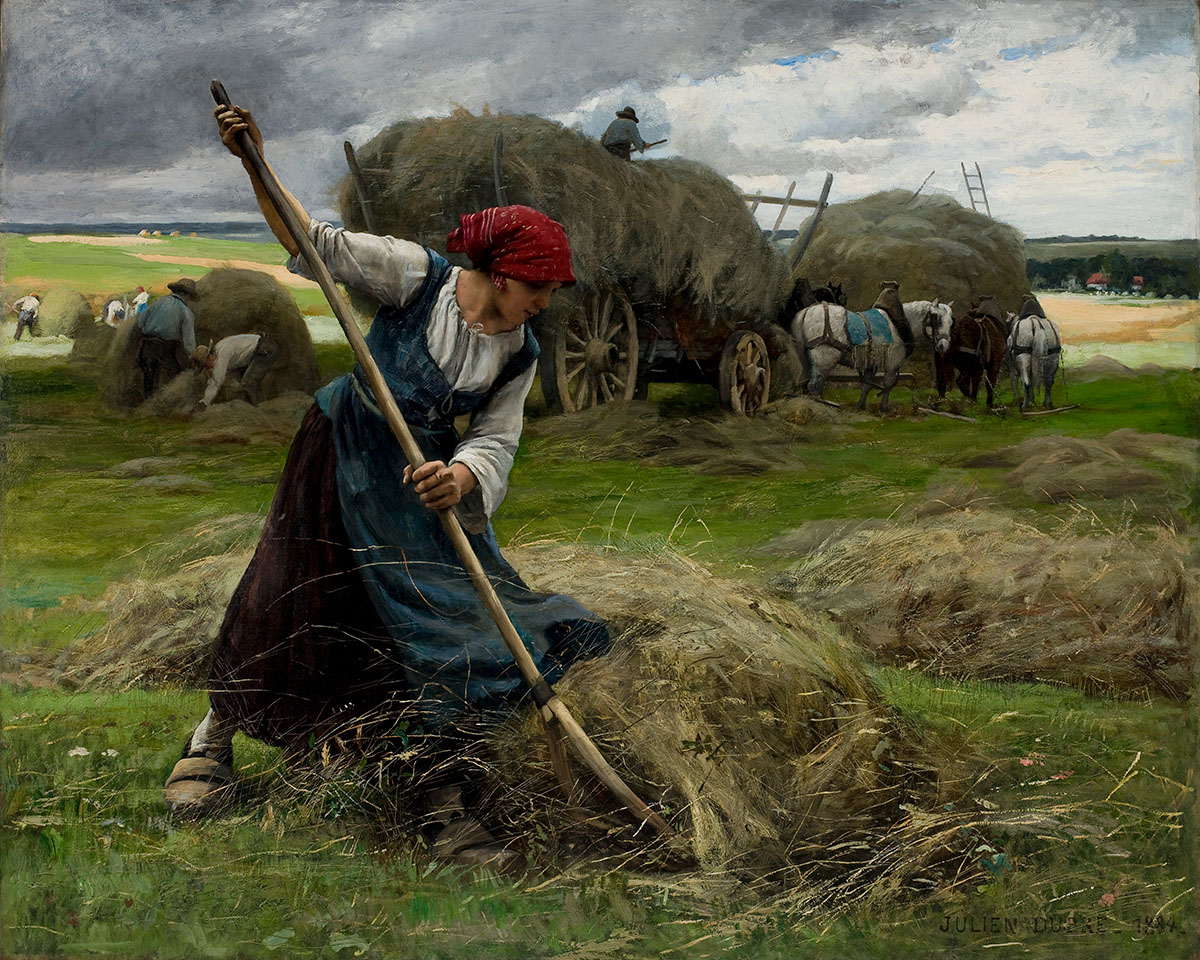
Julien Dupré (French, 1851–1910), Haying Scene, 1884, oil on canvas, Saint Louis Art Museum, Gift of Justina G. Catlin in memory of her husband, Daniel Catlin, 25:1917
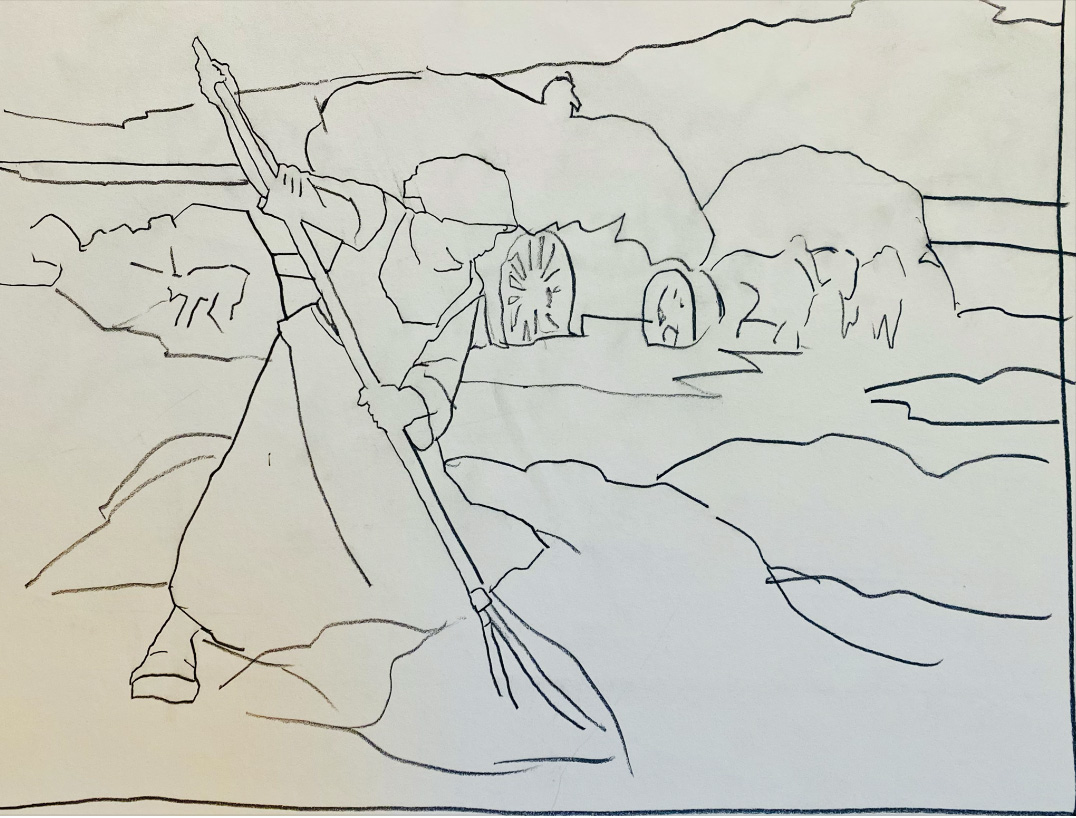
Sketch showing the overall composition of Julien Dupré’s Haying Scene.
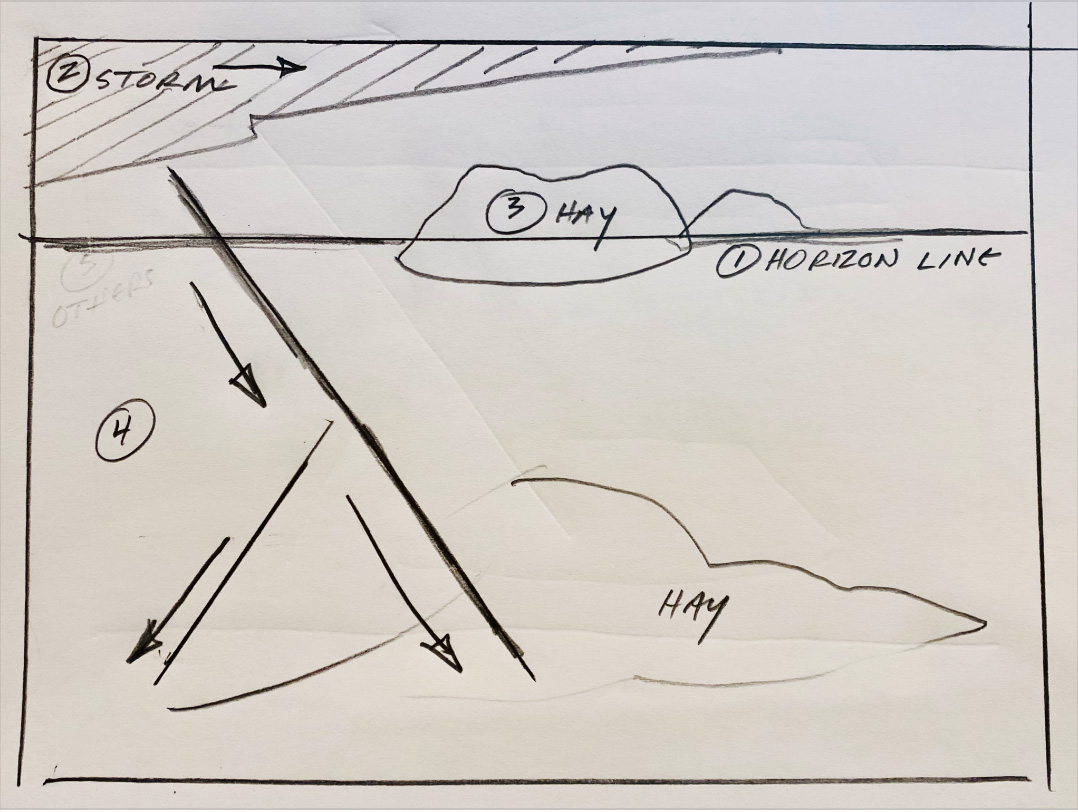
Sketch showing the basic compositional elements and lines of force in Julien Dupré’s Haying Scene.
Eye-catching realism sits on a scaffolding of strong abstract design. It’s not accurate to make a big distinction between realism and abstraction in painting. It’s not either/or—instead, it’s both/and.
So, what’s the story?
Setting the Scene. Every good story sets a scene, a context, a place. The painting design begins the scene with what’s called the horizon line. (image 1). Above is the sky, below is the French countryside. Both the sky and the countryside are actors in the story. The sky isn’t a pretty blue summer day. A storm is coming. Rain is a big threat to haying as it can ruin a crop. Below the horizon line, two thirds of the painting, is not just a pretty rural French landscape but a workplace. Haying is arduous work. So here we have the scene: workers struggling mightily to move mountains of hay before the rain comes. It’s a hard race against time and the hard facts of nature and farming.
The Actors. The protagonist is placed right in front of us, a few feet away, as if we are there in the field.
But she’s not alone. In the distance are her co-workers, one atop the mountainous hay pile overloading the wagon. Other figures bend to the haying along with three horses waiting to pull the heavy haul. So, the protagonist is part of a team, a laboring team of French peasants.
The Hero. The team is the collective hero, the individual hero is in front of us showing her great strength and determination with a fork taller than she is. Two diagonal lines (image 3) energize the figure, the fork going this direction \ and the leg going the other /, counterbalancing and forming an abstract X, marking a visual focal point.
Her hat is red, blouse is white, and skirt is blue: the French flag colors. She is planting the French flag, with the hay rake as the pole, turning her into a symbol of national vigor and resilience during a stormy era in French history.
Is this painting from the 19th century relevant to our lives today? Yes, because there are many human stories behind the food we eat and the goods we consume. As we lift our forks, maybe there’s a nudge from ’Haying Scene’ to appreciate the working hands that brought food to our tables and to reconsider who we think are heroes.
Related Blog Posts
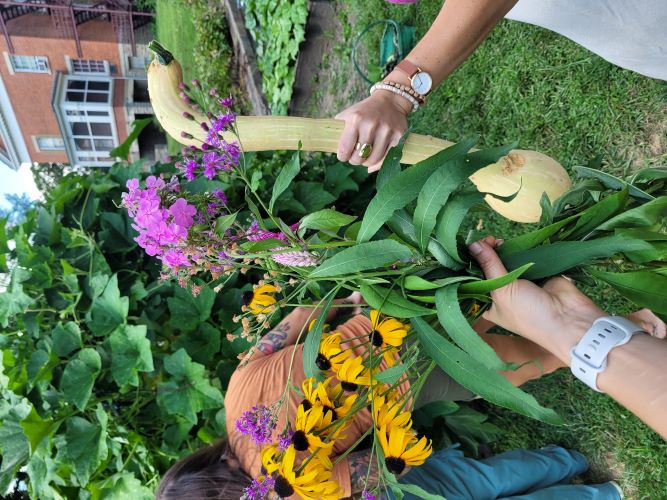
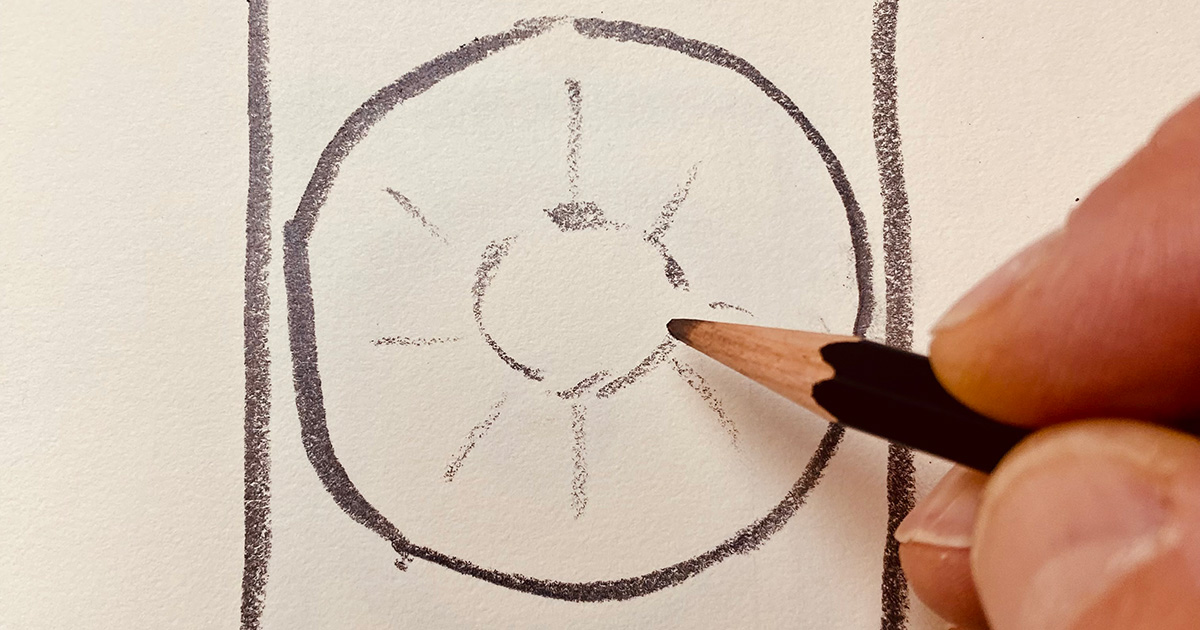

Cincinnati, OH 45202
Toll Free: 1 (877) 472-4226
Museum Hours
Museum Shop
Terrace Café
Library
Cincinnati Art Museum is supported by the tens of thousands of people who give generously to the annual ArtsWave Campaign, the region's primary source for arts funding.

Free general admission to the Cincinnati Art Museum is made possible by a gift from the Rosenthal Family Foundation. Exhibition pricing may vary. Parking at the Cincinnati Art Museum is free.
Generous support for our extended Thursday hours is provided by Art Bridges Foundation’s Access for All program.

General operating support provided by:



